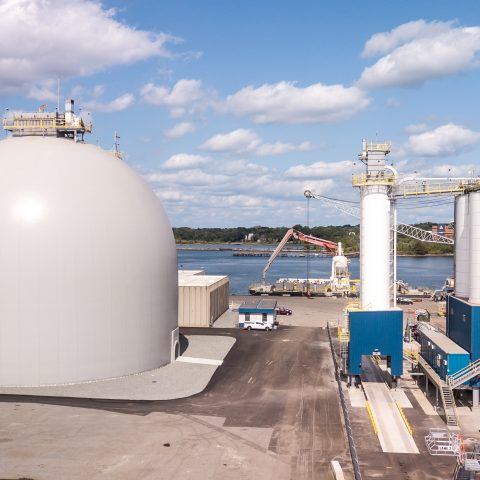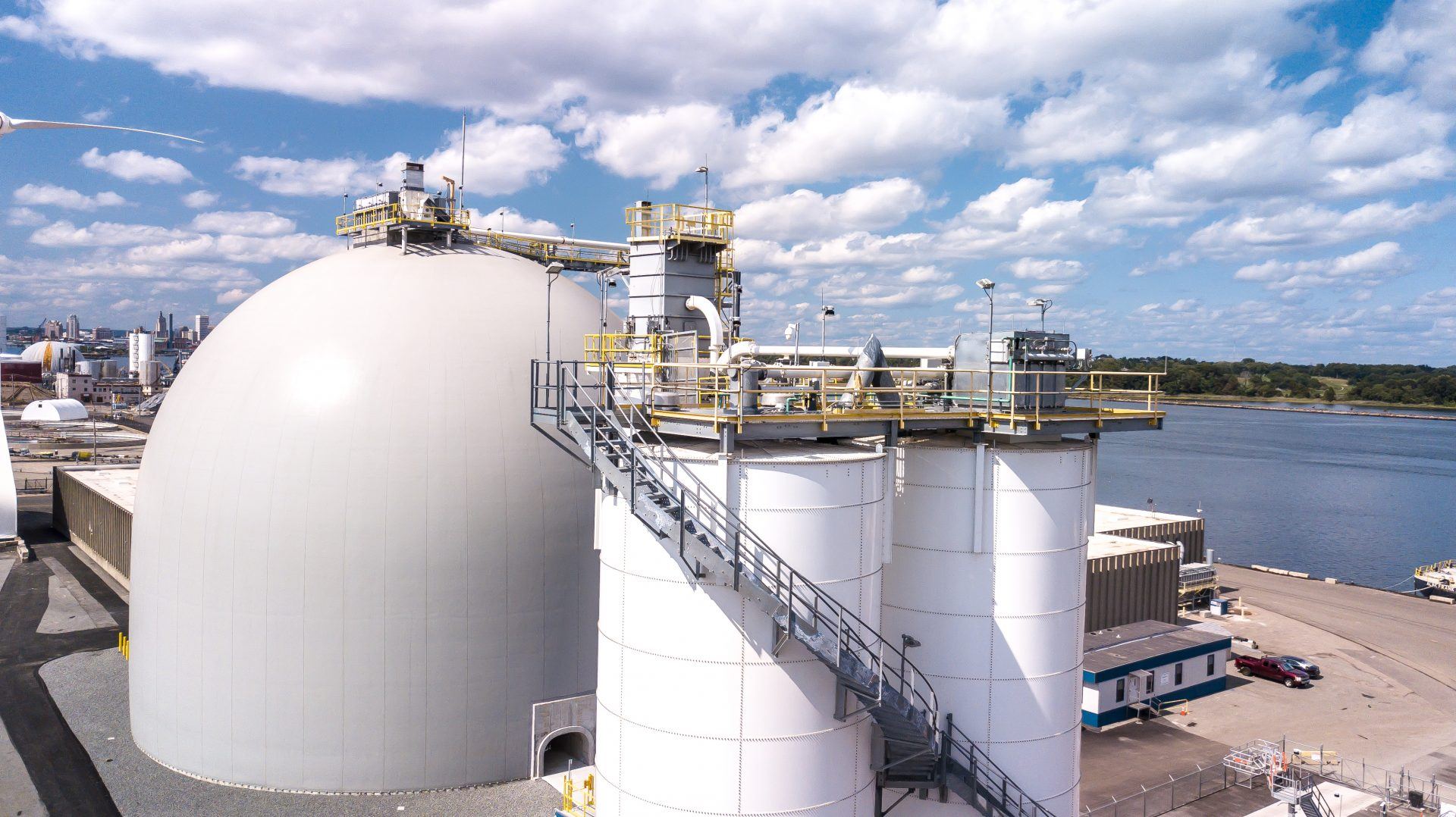Scope of Work
| Domes | Diameter | Capacity |
|---|---|---|
| #750 | 134ft | 40,000t |
| #750 | 40.8m | 40,000t |
In recent years McInnis Cement has been busy building itself as a serious player in the industry. As part of their effort to grow business, McInnis built a Providence, Rhode Island, facility, and after two years in operation, the company was ready for an upgrade.
“The initial 30,000-ton flat storage warehouse has been very functional, and it will continue to be used in conjunction with the new storage dome. However, the dome storage was elected for the expansion because the warehouse operations had various limitations. While we were reclaiming from that, we couldn’t offload a ship,” said project director Dominic Demers, adding that unloading would often pause for 10 to 12 hours a day during warehouse reclaim. “For phase two, we wanted to combine operation flexibility and maximum utilization of our growing marine fleet.”
Two challenges had to be addressed straightaway with this new project: The site’s soil wasn’t ideal, and a height limitation influenced how the new infrastructure could be designed. The height restriction in particular “made it uneconomical for us to build silos, and we wanted to keep the operating cost low,” said company director of communications Maryse Tremblay. “A dome was the natural choice for us.”
Dome Technology executed a prime contract directly with McInnis for the dome storage, structural steel, and mechanical work for pneumatic transport and reclaim of the stored cement material. Construction was completed in 2019. The DomeSilo is 134 feet in diameter with a storage capacity of 40,000 metric tons, and McInnis will continue utilizing its flat storage as well. To maximize the terminal’s abilities, McInnis selected a barge unloader rated at an aggressive 800 metric tons per hour.
Operating costs will be lower based on the system’s ability to keep product flowing. A dome with automatic reclaim allows McInnis to offload a ship while simultaneously reclaiming—no need to pay demurrage costs.
“What that’s going to allow us to do is to offload to the dome without having to stop. So it will really reduce our unloading costs,” Demers said. Tremblay agreed, adding that this new system reduces operating costs by not having to double-handle product inside the warehouse.

























